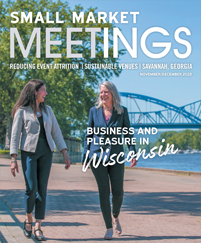
By Craig Terry, courtesy Cape May County Tourism
A quarter-mile of clean white sand lies between Wildwood, N.J.’s famed boardwalk and the Atlantic Ocean’s surf. The beach is so wide that a beach taxi carts sunbathers’ chairs and picnic baskets to the water’s edge.
While most East Coast beach resorts struggle to stanch erosion, Mother Nature smiles on Wildwood. The wide expanse of beach is used for everything from sand soccer, marble tournaments and ladder golf — a game in which players toss golf ball bolas around the rungs of a ladder — to water parks and amusement piers.
In 2002, a convention center was added to the mix, right on the boardwalk and the beach.
The Wildwoods, four towns that run together, share a five-mile-long island near New Jersey’s southern tip. The boardwalk and convention center are located in the central town: Wildwood.
Long a favorite family beach resort, Wildwood has a splendidly tacky two-mile boardwalk and more amusement rides than Disney World. It is dotted with casual clubs and restaurants, and many of its hotels and mom-and-pop motels proudly preserve a 1950s-60s architectural style known as doo-wop.
Doo-wop tradition
The mid-1900s put Wildwood on the map.
“After World War II, hotels exploded here,” said Ben Rose, marketing director for the Greater Wildwoods Tourism Improvement and Development Authority. “People returned from the war, got a car and a job, and reconnected with their families. They vacationed in places that were made to look like Hawaii and the Caribbean but were closer to home. Wildwood fit that bill and became the plastic-palm-tree capital of the world.”
More than 200 motels were built during that time, brash and bold with neon signs, swooping curves, space-age imagery, tropical themes and kidney-shaped swimming pools.
The recently restored Caribbean Motel was the first to “plant” a plastic palm by its kidney-shaped pool. Listed on the National Register of Historic Places, it is the first and only motel to become a member of Historic Hotels of America.
“What Art Deco is to South Beach, doo-wop is to the Wildwoods,” said Rose.
Cradle of rock ’n’ roll
Rock ’n’ roll was taking root, and Wildwood, the Las Vegas of the East in terms of entertainment, became a proving ground for many of its biggest stars. Bill Haley and His Comets first performed “Rock Around the Clock” at Wildwood’s HofBrau Hotel, and Chubby Checker got something going when he did the twist at the Rainbow Club.
The small Doo Wop Experience Museum, housed in the old Surf Side Restaurant across from the Wildwoods Convention Center, tells the story and is available for receptions for up to a 100 people. During the summer season, Billy O, a 1950s rock singer, climbs aboard an old school bus to lead tours of doo-wop sights and lights on Thursday and Saturday nights.
“In the summer, the museum serves ice cream and sandwiches from a sliding window and an old rolling cart,” said Dan MacElrevey, president of the Doo Wop Preservation League. “And WIBG radio, once Philadelphia’s pre-eminent rock ’n’ roll station, broadcasts from ‘under the boardwalk’ inside the museum.”
New businesses also tip their hats to the era. Wildwood’s Wawa convenience store, for example, is the chain’s only store that sports doo-wop features like glass bricks and curves.
Broaden the draw
Although Wildwood is first and foremost a seasonal family beach resort, the opening of the $70 million Wildwoods Convention Center in April 2002 began its shift. A day’s drive from one-third of the country’s population, the center can accommodate groups of from 100 to 10,000. Last year, 150 events were held there; it serves primarily the SMERF market and is a strong draw for associations and youth competitions.
The 260,000-square-foot facility, with 130,000 square feet of flexible meeting space, gave a nod to doo-wop by naming its 12,000-square-foot Starlight Ballroom after a dance hall that once stood on the boardwalk. Dick Clark’s “American Bandstand” was held there in 1957, and couples paid 50 cents to dance to the big bands.
But there the past ends. The state-of-the-art facility makes the best of its location, with a 74,000-square-foot exhibit hall and adjacent 6,000-square-foot ocean-view deck. Often used for concerts and sports events, the hall has bleachers that pull out from three walls to form a 7,500-seat arena around an 80-foot-wide stage.
Ten meeting rooms accommodate 40 to 60 people each; there’s also a 30-seat boardroom.
Two long lobbies — one facing the boardwalk, the other the beach — can be used for exhibits and events. Eight loading docks make setup and teardown easier.










